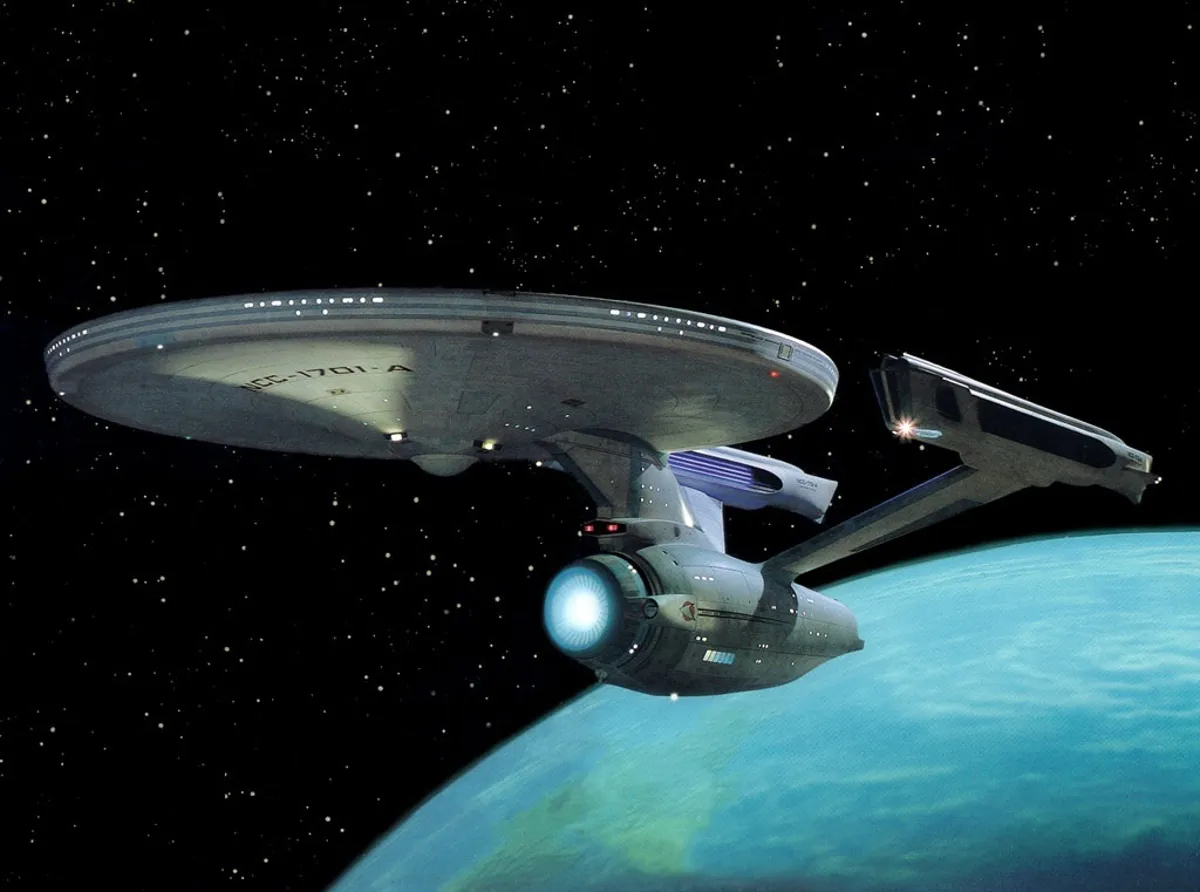

- © 2003 - 2025 Dynamix Productions, Inc. Contact Us 0



I'm a self-professed nerd and "Trekkie" so it's hard to contain my excitement with the current resurgence of Star Trek in our living rooms. My earliest memories of Star Trek are from the last season of the original series (that's TOS for you non-Star Trek nerds). During that slow march to the gallows, dimwitted network muckity-mucks sentenced Star Trek to their weakest time slot: Friday nights at 10 PM. The resulting low ratings provided the perfect excuse to torpedo the show they hated and misunderstood. But for a 7 year old who had seen 2001: A Space Odyssey and was witnessing the race to the moon, the move to Friday night was the opportunity to finally watch the show all the other nerds at school were talking about. It was a hard sell to convince my parents to let me stay up that late, but my science fiction loving Mom tipped the scales in my favor.
The starship Enterprise was as much of a character in the show as the people were. Captain Kirk would walk toward a doorway and the doors would magically open, emitting a distinctive squeal with a hissing sound. Sulu would push a switch on his flight console and it would respond with a beep and whirl. The ship made a constant pulsing drone, no matter where the crew was. When they beamed down to a planet, the transporter sounded like music. On the planet, it was even more musical, with eerie and ethereal chords slowly swaying back and forth in harmony.
TOS sound designer Douglas Grindstaff recalled how show creator Gene Roddenberry wanted wall-to-wall sound. He wanted Grindstaff to paint a sound picture of each scene without getting cartoony. One thing that Star Trek did well was to evade the typical science fiction sounds of that time. For instance, many other programs and movies made use of the theremin, an electronic musical instrument known for it's howling sound (used in The Day the Earth Stood Still). Grindstaff and his team did however use electric instruments like organs and guitar feedback to create sounds, but they were usually manipulated and blended with organic sounds. In the days of magnetic tape and film, sound designers would manipulate the physical recording itself with sandpaper, steel wool, and razor blades to get the right crunchiness or fade out. Because of its highly creative sound team, no other television show in the 1960s sounded like Star Trek.
When Star Trek: The Next Generation (TNG) came along in 1987, the sound team had some very large shoes to fill. They were able to blend in some old sounds from the TOS days, but actors were no longer flipping switches – they were touching glass panels. This and other TNG technology had the sound designers relying heavily on synthesized sounds, like those created by the Synclavier, a digital music and sound effect generator. TNG also employed wall-to-wall sound like in TOS, like the constant hum of the ship. Dialogue rerecording mixer Chris Haire was thankful for that low end rumble, because the dialog recordings on set were often noisy from creaky wooden floors, transformer hum, and other production noises. TNG was produced with digital sound, cutting edge at the time, by locking three 8-channel digital tape recorders together for a total of 24 tracks. As in TOS, TNG engineers had to be crafty in managing the many layers of sounds within the limits of technology. The music score for TNG evolved alongside the story lines. All live orchestra recordings eventually replaced synthesized tracks about four years in.
The Star Trek franchise has exploded in recent years following a 2008 cinema reboot. There are currently four television shows in production (five if you count Picard which just ended a three season run), two more greenlit, and several more on the table for consideration. The movies may be ramping back up, and the video games and novels are so serious that their plot lines are becoming canon and written into the television series. With that comes even more pressure on the sound design team to get it right. In the series Strange New Worlds, which is a prequel to TOS and about to kick off season two, the Enterprise once again becomes an important character. The engineers dug into the 60 year old archive of sounds and decided which ones would be reused as-is, and which would be recreated or blended with modern sounds.
The "new" Enterprise has more glass panels than physical switches, so the design team had to create entirely new sounds. But switch noises resurrected from TOS have their moments. As SFX editor Kip Smedley said, "When we do see those big chunky switches though, we sure do lay into them." The sound of the tricorder, a portable scanning device that was a mainstay in TOS, is a blend of old and new sounds. For the transporter, Smedley turned an old wine box into an Aeolian harp (an ancient passive stringed instrument that vibrates with the wind) to mimic the eerie organ sounds from the 1960s show. Smedley installed electric guitar pickups and used a fan to vibrate the strings.
One final note about the sound of Strange New Worlds and its connection to the original series. While Gene Roddenberry and his sound team tried to avoid cliché music and sound effects, composer Nami Melumad ended Strange New Worlds' main theme with a theramin-like motif of the original theme. This brilliant choice invokes the wide-eyed and daring enthusiasm of the original series and science fiction from that era.
The second season of StrangeNew Worlds premieres Thursday, June 15, 2023 on Paramount+.